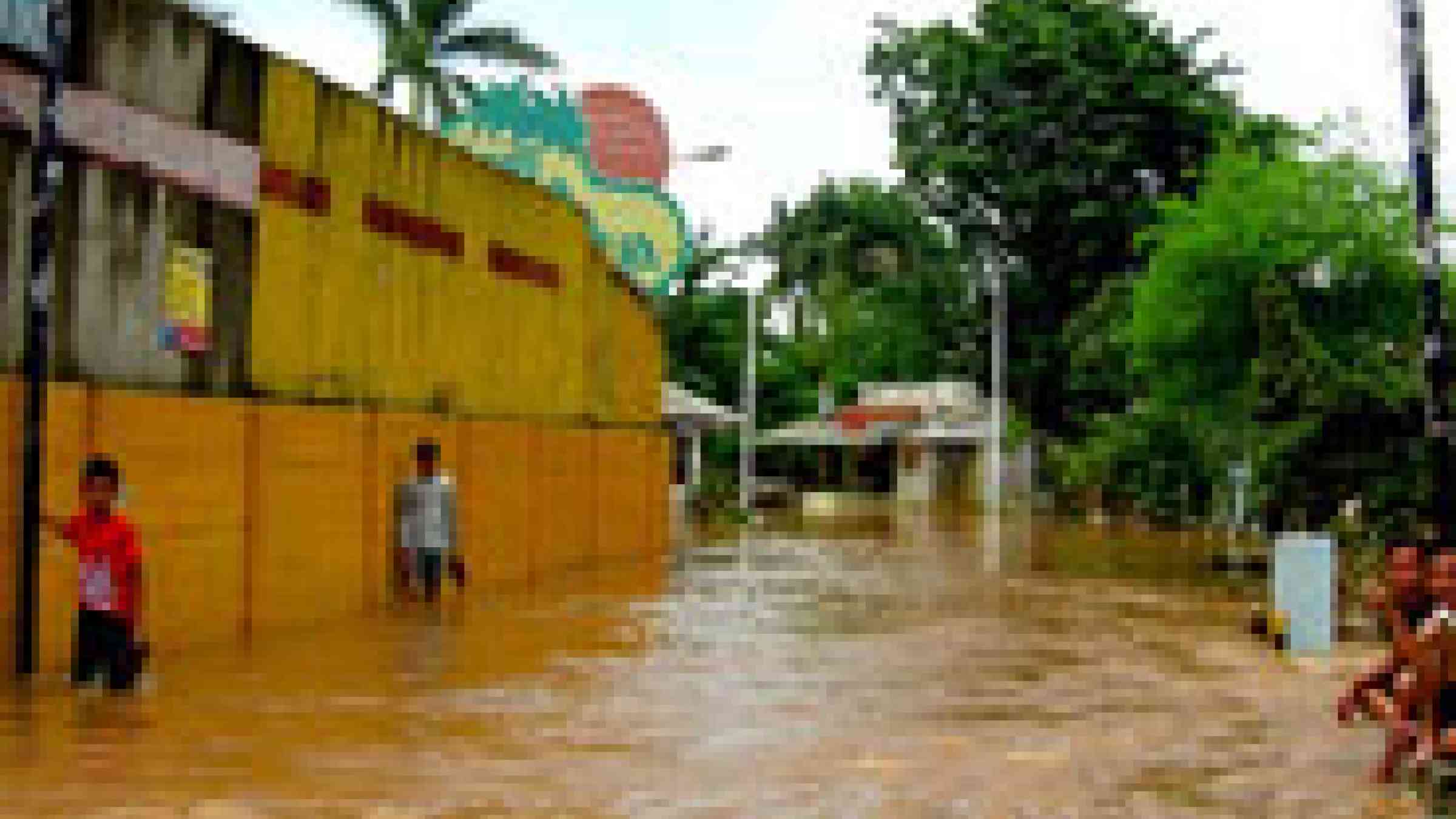Red Cross Red Crescent and IRI forge partnership to save lives in face of climate change and its humanitarian impacts

The International Research Institute for Climate and Society, based at Columbia University in New York, is developing tailored forecasting and monitoring products to help the International Federation of Red Cross and Red Crescent Societies improve its capabilities to both respond to and prepare for disasters. The need to incorporate climate information into disaster-risk reduction and decision making is urgent, evidenced by the increasing frequency, intensity and humanitarian consequences of disasters around the world.
According to the International Federation, the number of weather-related disasters each year has doubled since the early 1990s. A changing climate coupled with changes in land use and population patterns means more people will be living in locations vulnerable to storms, droughts, floods and other climate risks. The flood-related cholera epidemics in Senegal in 2005, for example, affected more than 30,000 people and killed nearly 500. Recently in Bangladesh, Cyclone Sidr forced millions from their homes and killed thousands. Events such as these--expected to become more frequent due to climate change--will place an increasing burden on governments and humanitarian organizations, which are responsible for mitigating impacts and saving lives.
The IRI's collaboration with the International Federation -- the largest humanitarian organization in the world, with tens of millions of volunteers -- provides an enormous opportunity for improved early warning and early action at global and local levels.
"We are thrilled to be working with the International Federation to better anticipate and respond to extreme weather and climate events. As a global leader in disaster response, it is an ideal partner to connect new knowledge and information with best practices throughout the world," says IRI Director-General, Steve Zebiak.
"Based on our initial interactions, I feel we're not far from a time when we can say that thanks to this particular partnership, we've been able to save more lives," says Peter Rees-Gildea, who directs the International Federation's operations support department.
In responding to disasters such as droughts, floods and epidemics, organizations such as the International Federation must decide when and where to send aid. Since both time and resources are limited, determining which areas are likely to be hit first or hardest by an event can mean the difference between life and death. Also critical is predicting the "hotspots", or areas that are at high-risk because of their location and the vulnerability of their populations. Examples include densely populated flood plains.
The IRI's climate-risk management approach involves combining state-of-the-art climate information with knowledge on vulnerability and sector specific impacts. Over the last 11 years, the IRI has developed a variety of tools to better understand, anticipate and respond to climate and weather events and their socioeconomic impacts.
Health is one area which can benefit immediately from new tools, such as the Malaria Early Warning System (MEWS). Developed by the IRI, the World Health Organization and partners, MEWS incorporates vulnerability assessment, seasonal forecasting, climate and environmental monitoring and health surveillance. It is already being used operationally in Africa, where the information is integrated into epidemic prevention and control. The IRI is also working on similar systems for epidemic meningitis, Rift Valley Fever, cholera and other diarrheal diseases, all of which have direct relevance to the International Federation’s health operations. Such tools will be used to enhance the International Federation’s community-based response.
The partnership is also well positioned to use improved models for climate anomalies and extreme weather forecasts. This could be vital for early warning and response measures as both extremes and anomalies present particularly complicated conditions for disaster response.
For further information, or to set up interviews, please contact:
Clare Oh, Columbia University in New York Tel: + 1 212 854-5479
Matthew Cochrane, International Federation in Geneva Tel: + 41 79 308 9804
Media Service Duty Phone (Geneva) Tel: + 41 79 416 3881
The Geneva-based International Federation promotes the humanitarian activities of 186 National Red Cross and Red Crescent Societies among vulnerable people. By coordinating international disaster relief and encouraging development support, it seeks to prevent and alleviate human suffering. The Federation, National Societies and the International Committee of the Red Cross together, constitute the International Red Cross and Red Crescent Movement.
© International Federation of Red Cross and Red Crescent Societies